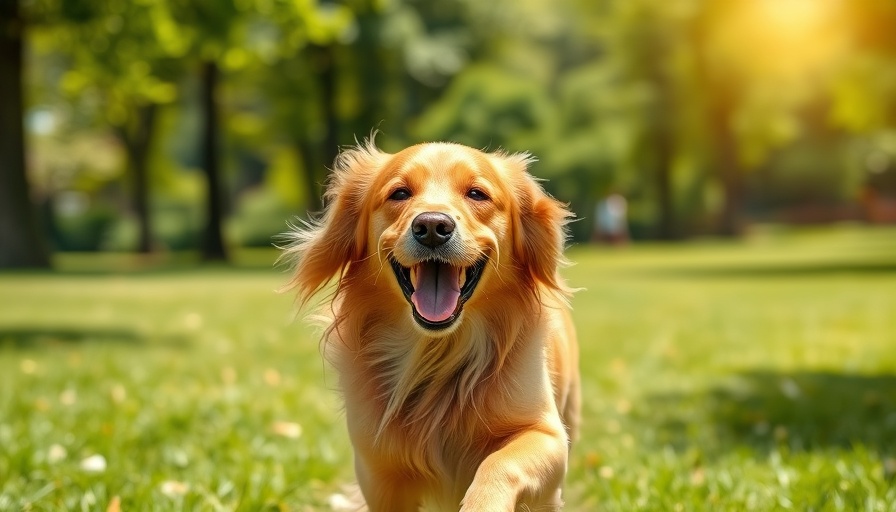
Make Bath Time a Breeze: Essential Tips for Pet Health
Bathing pets is more than just a chore; it's an essential part of ensuring their overall health, hygiene, and happiness. Whether you have a playful pup or a shy kitty, mastering the art of bath time can enhance your companionship while keeping your furry friends comfortable and clean. Here’s how you can make bath time less stressful and more delightful for both you and your pet.
Why Bathing Your Pet Matters
Bathing pets serves many purposes beyond just keeping them looking fresh and odor-free. Regular baths help remove built-up dirt, allergens, and even parasites that can irritate their skin. A good wash not only eases itching but also holds the promise of a softer, shinier coat. With consistent bathing, health issues such as flea infestations can be detected early.
Moreover, bathing is a golden opportunity to bond with your pet. It's a time to check for bumps, irritations, or signs of any skin issues. Clean pets are generally happier and more relaxed; and a happier pet results in a happier home.
Establishing Bathing Frequency: Finding the Perfect Balance
Determining how often to bathe your pet is a fine art. While most dogs thrive with a bath every month or even once every three months, individual circumstances matter. An active dog that loves mud puddles may need frequent rinses, while indoor cats might only need an occasional wash.
Here’s a simplified breakdown:
- Active Pets: For those dogs who love to frolic in the dirt, a bath after each adventure is advisable to keep them clean and comfortable.
- Pets with Health Conditions: Dogs suffering from allergies or skin issues may require medicated baths more often—always consult your vet for the best advice.
- Short-Haired Pets: These pets can usually go longer between baths unless they find something particularly odorous.
The Right Products for Safe Bathtime
There is a myriad of pet-safe shampoos on the market, but remember, products made for humans can be harmful. Look for shampoos designed specifically for your pet’s skin type. Make sure to choose ones free of harsh fragrances and chemicals that may irritate your pet’s skin. Non-slip mats are also vital to help your furry friend feel safe in the tub, preventing slips and falls that could lead to accidents and fear.
Mastering Bath Technique for Dogs and Cats
Bathing techniques can greatly impact the experience for your pet. Always brush your dog or cat before getting them wet to remove tangles and loose fur. Use lukewarm water, and wet your pet’s body first—avoiding the face until the end. A damp cloth is perfect for gently wiping their face, while a thorough rinse helps prevent skin irritation.
Emphasizing a calm environment is crucial. Speak softly, play soothing music, and always have their favorite toys nearby to keep them relaxed. After the bath, wrap them in a warm towel and reward them with a treat. Over time, these gestures help create a positive association with bath time.
Preparing for the Future of Pet Bathing
As pet owners, understanding the ongoing changes in pet care and grooming practices is essential. With the recent rise in awareness about pet health, many veterinarians are advocating for tailored grooming routines that suit each pet's individual needs. Keeping an eye on these trends not only helps maintain your pet’s hygiene but also enhances their overall health and well-being.
As you embark on your pet bathing journey, consider investing in additional resources such as pet grooming workshops or consultations with experienced groomers. These opportunities can provide valuable insights into best practices and innovations in pet care.
Turning Bathtime into Bonding Time
Ultimately, bath time should be viewed as a chance to bond with your pet rather than a task. Introducing shower-time games and fun interactions can create a positive experience that strengthens your bond. As a pet parent, your approach to bath time can significantly impact your pet’s emotional willingness to cooperate.
Join thousands of pet lovers who are transforming the concept of bath time from a dreaded duty into a delightful ritual. As each bath concludes with a cuddle, your furry friend will look forward to this special time, bringing joy into both of your lives.
Conclusion: Embrace the Experience
Bath time doesn’t have to be a chaotic struggle; with the right approach, it can be enjoyable for both you and your beloved pet. So, gather your supplies, set the mood, and make this moment one of connection and care. Keep in mind that embracing this experience can transcend mere cleanliness—it opens the door to deeper trust and affection in your furry companionship.
For ongoing advice on ensuring your pet's health and happiness, join our community and subscribe to our newsletter filled with tips and insights tailored for you and your pet!
 Add Row
Add Row  Add
Add 




Write A Comment